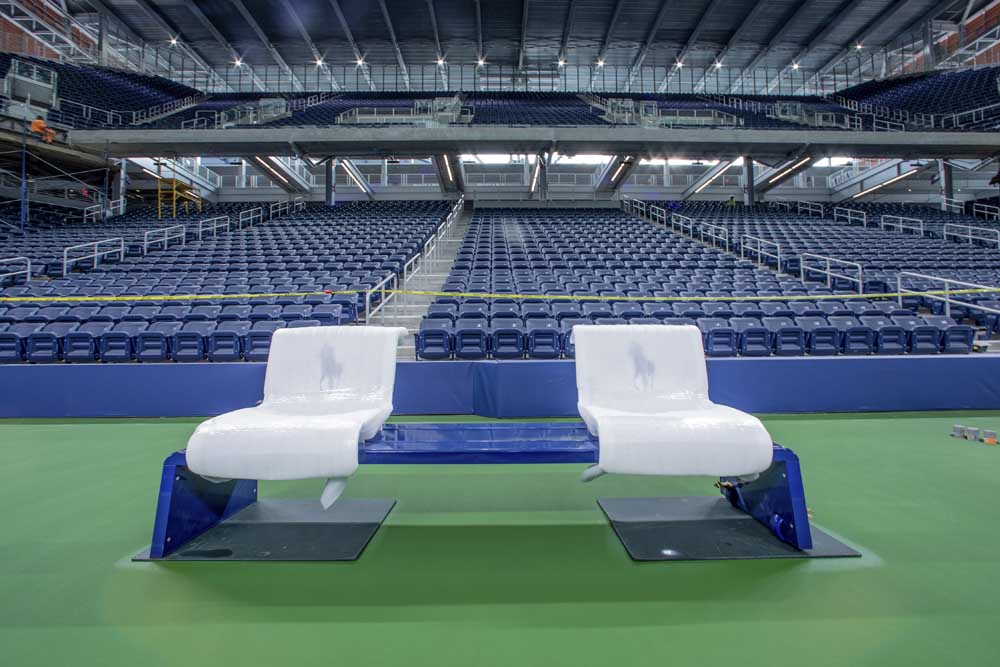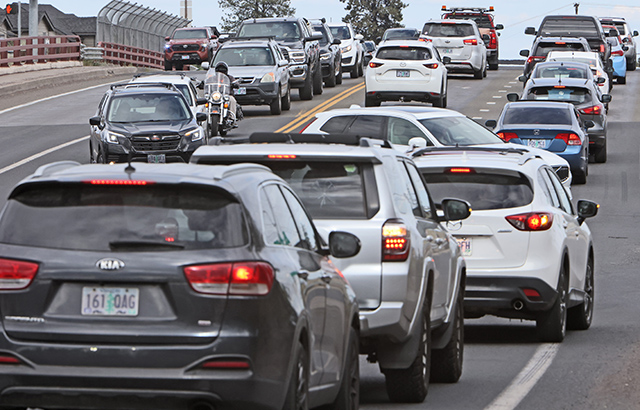Take a sneak peak at what’s new at the U.S. Open
Published 12:00 am Wednesday, August 22, 2018

- Player seats on the count of the new Louis Armstrong Stadium at the Bille Jean King National Tennis Center in New York, Aug. 16, 2018. A Louis Armstrong Stadium with a roof, a serve clock, Hawk-Eye on every court and a plethora of free events are among the features as the tournament celebrates its 50th anniversary. (Uli Seit/The New York Times)
NEW YORK — Kevin Anderson could hear the clang of fans thumping their sneakers into the metal bleachers during his fourth-round win over Paolo Lorenzi at the temporary Louis Armstrong Stadium during last year’s U.S. Open. The noise sounded like a toddler brandishing a wooden spoon against the side of an oversized pot.
Anderson also was unnerved by the shadows that crept along the back of the court, the result of trees hanging a bit too close to the end of the makeshift structure.
Trending
But Anderson, a lanky South African who would go on to reach his first major final at the 2017 Open, was still fortified by the support of the crowd that packed into the 8,500-seat structure and did his best to focus on the match rather than the environment.
“In the end, it isn’t the court or the physical structure that matters,” said Anderson, a finalist at Wimbledon this year. “What really matters out there is the atmosphere. When you get an intimate court, everyone feels like they’re part of the match and the energy just goes way up.”
If Anderson likes intimacy and energy, he will be thrilled to compete on the new Louis Armstrong Stadium, a 14,061-seat, terra cotta-covered edifice that opens with this year’s tournament and serves as the capstone for the United States Tennis Association’s five-year, $600 million overhaul of the USTA Billie Jean King National Tennis Center.
The new stadium has the tournament’s second retractable roof, after one was added over the 23,771-seat Arthur Ashe Stadium in 2016. That guarantees that more matches than ever will be completed regardless of inclement weather.
The entire upper tier at Armstrong, more than half the seats, is open to all fans on a first-come, first-served basis. The lower level, situated on the same footprint as the Singer Bowl from the 1964 World’s Fair, requires a reserved ticket.
The most significant innovation of the new Armstrong Stadium is its lack of commercial air conditioning. While Ashe Stadium is ventilated by a water-cooled system that blows cold air into the seating area to keep the structure dry and minimize humidity, the new Armstrong is billed as the first naturally ventilated roofed tennis stadium in the world.
Trending
This is accomplished through a design that allows for a north-to-south breeze that is enhanced by 14,250 terra cotta louvers (that would, if placed end to end, stretch farther than the length of Manhattan) and a perforated lower-level seating bowl that allows air to pass through underground pathways.
The concourse level is open on both ends, making the structure seem downright balmy even on hot days. More than 50 percent of the Rossetti-designed building is shaded by the Teflon-coated polytetrafluoroethylene fabric that stretches over the roof panels. The roof, like that on Ashe, can be closed in about six minutes.
The lines of fans that often snaked around the old Armstrong when marquee matchups were underway also could be a thing of the past. Two new entranceways — each featuring a large staircase, escalator and elevator — should ensure that fans can find a seat, as well as food and tournament merchandise, without leaving the venue.
The rebuilt Armstrong cost $200 million of the $600 million “Five-Year Strategic Transformation,” as the USTA called the renovation. All of it was completed on time, within budget and with no public funding, according to Danny Zausner, the chief operating officer of the National Tennis Center. The Ashe roof cost $180 million, and the new Grandstand and the renovation of the South Campus, which also debuted in 2016, cost an additional $165 million. The first phase of the project — an elevated 1,300-seat gallery overlooking courts 4-6 and the practice courts — began in 2014.
The addition of another roofed stadium on site allows for a tweak in the tournament schedule. Armstrong will have a designated two-match night session — with separate ticketing — for the first six days of the tournament. (The day sessions at Ashe have been reduced to two scheduled matches from three.)
“This is going to be tremendous for the fans,” tournament director David Brewer said. “With two roofs, we now have the ability to rotate every top player through both stadiums. Fans want star power, but, first and foremost, we want to give every player the opportunity to compete at their best.”
One thing has not changed, however: the name of the stadium. While many thought the new court might be named for an American champion, perhaps six-time U.S. Open winner Chris Evert or four-time victor John McEnroe, a New Yorker, that discussion never got started. As part of the approval process, the city stipulated that the stadium continue to be named for Armstrong, the noted jazz musician and a former Queens resident.








